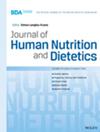Volume-based enteral feeding for ward patients with acute neurological conditions: a pilot prospective cohort study
Abstract
Background
Patients requiring enteral nutrition (EN) after neurological insults experience feeding interruptions, contributing to inadequate nutrition delivery. This prospective cohort study investigated if volume-based enteral feeding (VBF) improved the delivery of prescribed EN volume in ward patients with acute neurological conditions.
Methods
Over two sequential periods, the usual care group received standard continuous rate-based feeding, and the intervention group received VBF with bi-daily EN rate adjustments to achieve target daily volume. The primary outcome was percentage of prescribed daily EN formula volume delivered. Differences in energy and protein provision, weight, malnutrition and safety were explored. An evaluation survey captured nurse acceptability of the protocol.
Results
The intervention group (n = 32) achieved greater median interquartile range (IQR) EN adequacy of prescribed volume at 92% (88–97) compared to 67% (54–78) for usual care (n = 35) (p < 0.001). VBF compared to rate-based feeding resulted in patients receiving more kilojoules (131 [121–138] kJ/kg vs. 84 [64–99] kJ/kg; p < 0.001) and protein (1.3 [1.2–1.5] g/kg vs. 0.9 [0.6–1.1] g/kg; p < 0.001). There were no differences in gastrointestinal intolerance between groups. Compliance to the VBF protocol was 90%, and 78% of staff reported high confidence using the protocol. The intervention group had less median weight loss at discharge (−1.4 [0.1 to −4.3] kg) than usual care (−3.6 [−1.3 to 8.4] kg; p < 0.011), but no differences in malnutrition status were observed.
Conclusion
A VBF protocol delivered greater EN volume, energy and protein following neurological injury. The VBF protocol was feasible with high acceptability from nursing staff.

 求助内容:
求助内容: 应助结果提醒方式:
应助结果提醒方式:


